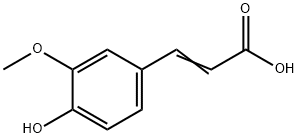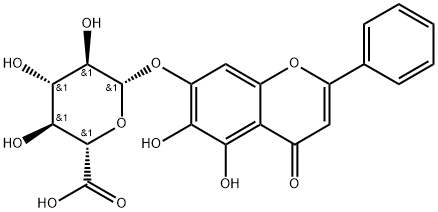Piperine , 97% , 94-62-2
Synonym(s):
(E,E)-5-(3,4-Methylenedioxyphenyl)-2,4-pentadienoylpiperidide;1-Piperoylpiperidine;Piperine
CAS NO.:94-62-2
Empirical Formula: C17H19NO3
Molecular Weight: 285.34
MDL number: MFCD00005839
EINECS: 202-348-0
| Pack Size | Price | Stock | Quantity |
| 1G | RMB48.80 | In Stock |
|
| 5G | RMB100.00 | In Stock |
|
| 25G | RMB431.20 | In Stock |
|
| 100G | RMB1195.20 | In Stock |
|
| others | Enquire |
PRODUCT Properties
| Melting point: | 131-135 °C(lit.) |
| Boiling point: | 427.77°C (rough estimate) |
| Density | 1.0864 (rough estimate) |
| refractive index | 1.5400 (estimate) |
| FEMA | 2909 | PIPERINE |
| storage temp. | Sealed in dry,Room Temperature |
| solubility | Slightly soluble in water, 10% soluble in alcohol, soluble only in certain oils |
| form | Crystalline Powder |
| pka | 12.22(at 18℃) |
| color | Off-white to tan or yellow-tan |
| Odor | at 1.00 % in propylene glycol. pepper animal |
| Odor Type | spicy |
| Water Solubility | 40 mg/L (18 ºC) |
| Merck | 14,7472 |
| JECFA Number | 1600 |
| BRN | 90741 |
| Stability: | Stable. Incompatible with strong oxidizing agents. |
| InChIKey | MXXWOMGUGJBKIW-YPCIICBESA-N |
| LogP | 2.66 |
| CAS DataBase Reference | 94-62-2(CAS DataBase Reference) |
| NIST Chemistry Reference | Piperine(94-62-2) |
| EPA Substance Registry System | 2,4-Pentadien-1-one, 5-(1,3-benzodioxol-5-yl)-1-(1-piperidinyl)-, (2E,4E)- (94-62-2) |
Description and Uses
Piperine is an alkaloid responsible for the taste and fl avor of pepper. In pure form it exists as a yellow to pale-yellow crystal, with a burning taste and pungent order. It is found naturally in plants in the Piperaceae family, particularly Piper nigrum (black pepper) and Piper longum (Indian long pepper). Piper nigrum is a perennial woody vine that grows to approximately 30 feet. It produces spikelike flowers that hold berries called peppercorns.
Piperine is used in granular formulations as a pesticide against small animals such as dogs, cats, skunks, raccoons, and squirrels. Piperine pesticides are nontoxic and operate as a repellant when animals smell or test them. Piperine is also incorporated with other compounds to make insecticides; it is effective against houseflies, lice, and various other pests.
Piperine has been used medicinally for thousands of years and this continues today. It is used to treat asthma and chronic bronchitis. It also has putative analgesic and antiinfl ammatory properties that stem from its antioxidant properties. Research is examining the use of piperine in treating malaria. Antiepilepsirine is a derivative of piperine that is used to treat different types of epilepsy, especially in China. A current area of interest is the efficacy of piperine in increasing the bioavailability of certain nutrients and drugs. It is thought to possibly aid digestion and increase the absorption in the digestive tract of numerous drugs used as cancer treatments, antihistamines, steroidal inflammation reducers, and antibiotics.
Safety
| Symbol(GHS) |   GHS07,GHS09 |
| Signal word | Warning |
| Hazard statements | H302-H411 |
| Precautionary statements | P264-P270-P273-P301+P312-P391-P501 |
| Hazard Codes | Xn,Xi,N |
| Risk Statements | 22-21/22-20/21/22-51/53 |
| Safety Statements | 22-24/25-36/37-36-61 |
| RIDADR | UN 3077 9 / PGIII |
| WGK Germany | 3 |
| RTECS | TN2321500 |
| Hazard Note | Irritant |
| TSCA | Yes |
| HS Code | 29399990 |
| Toxicity | LD50 orally in Rabbit: 514 mg/kg |



